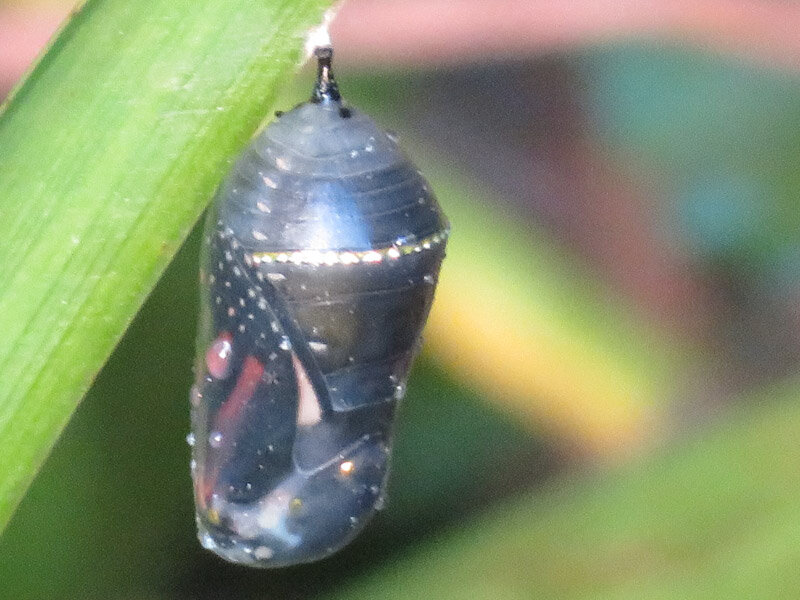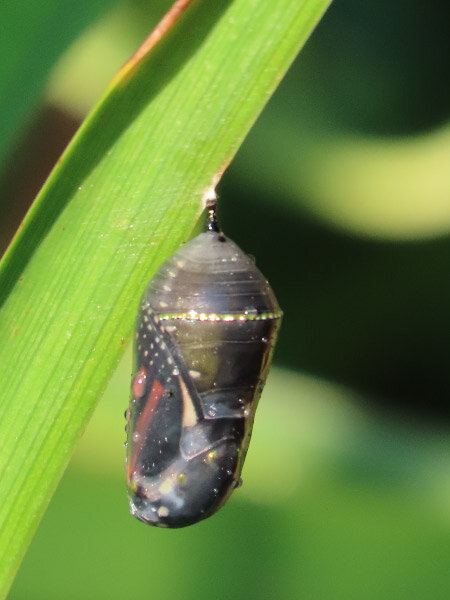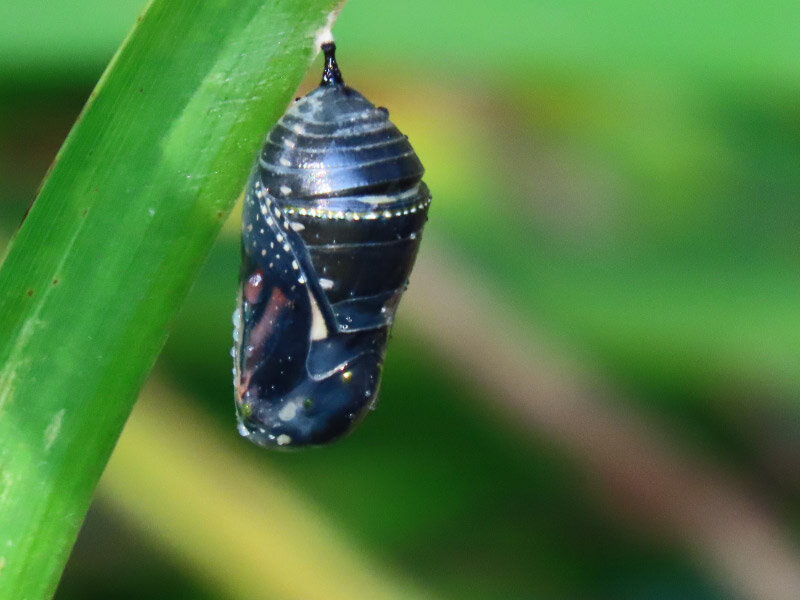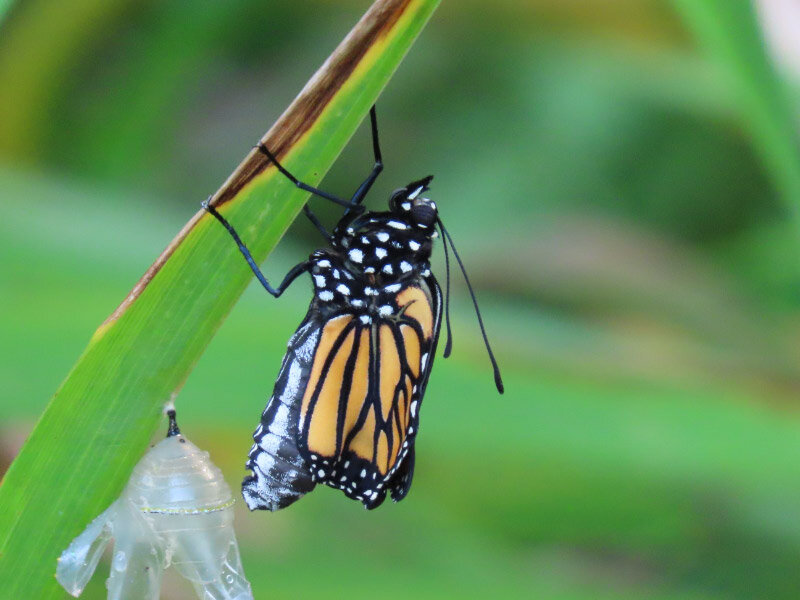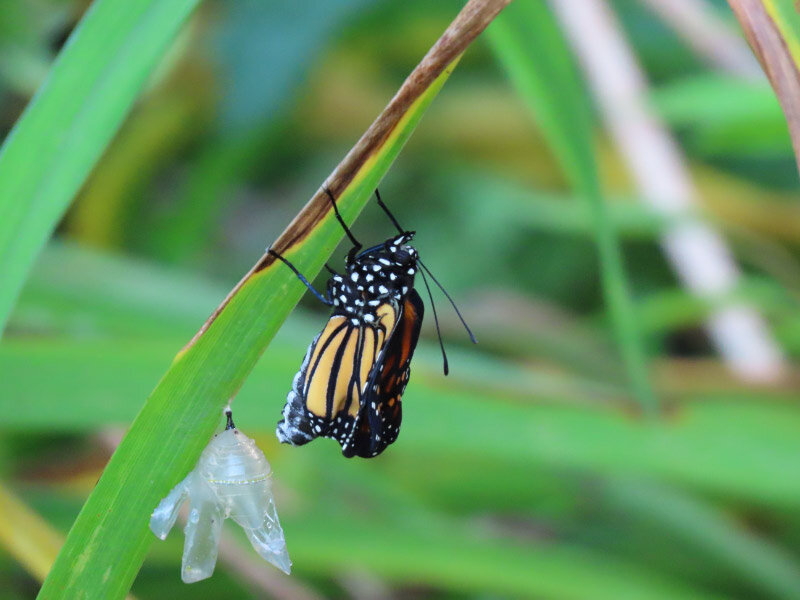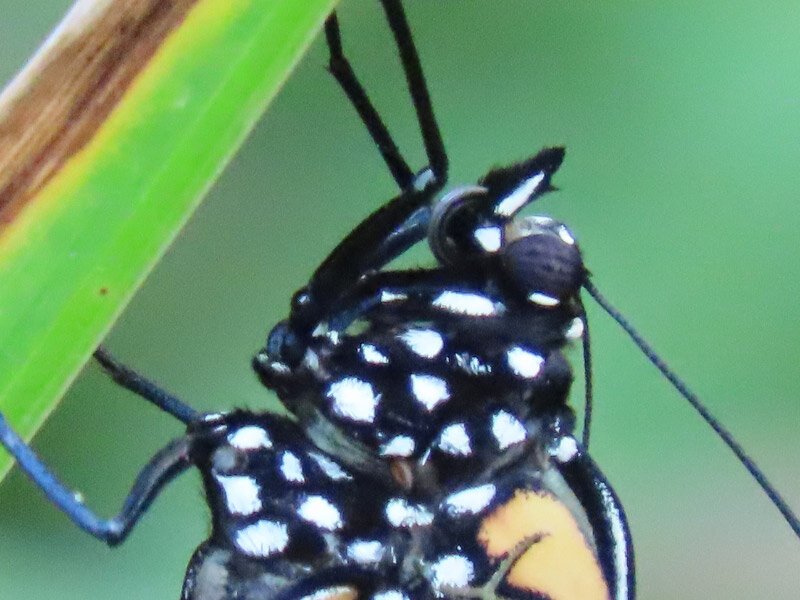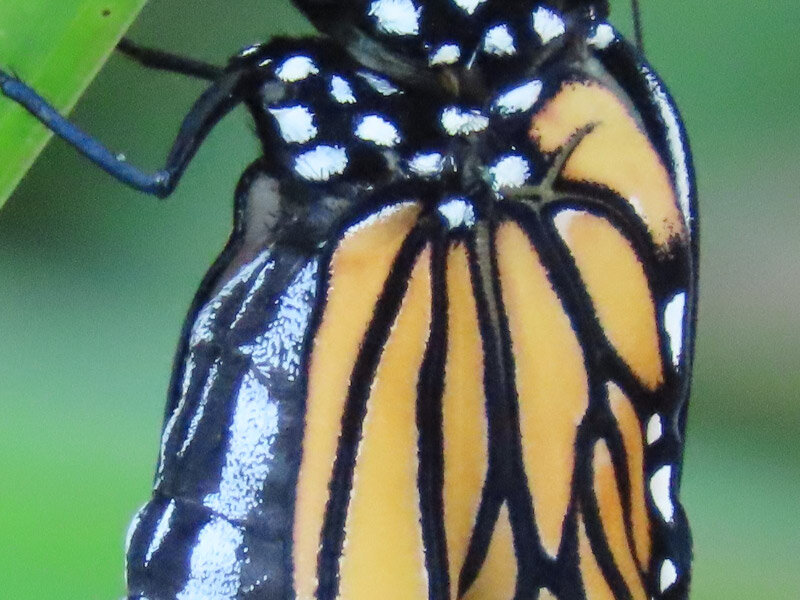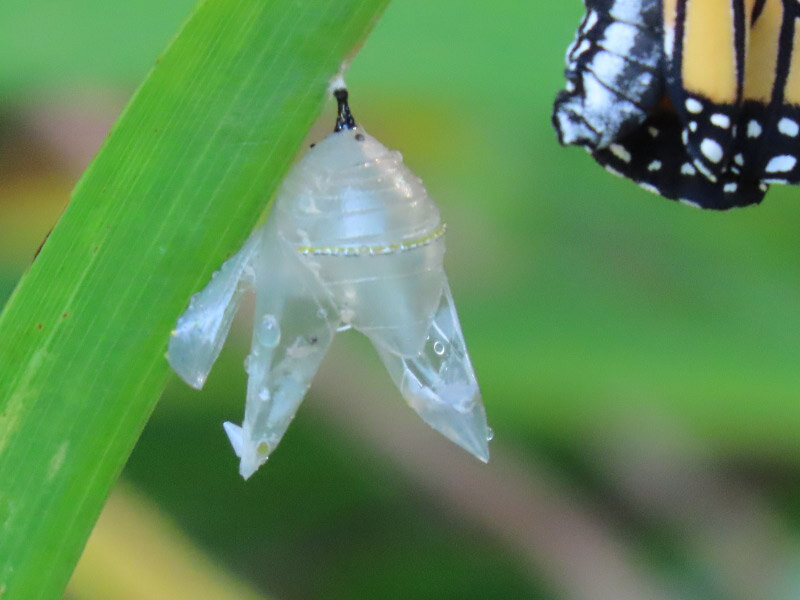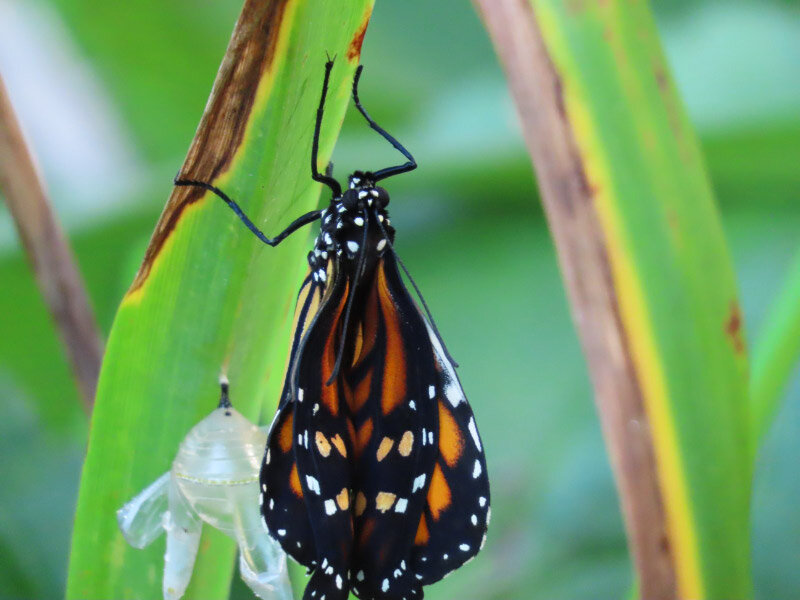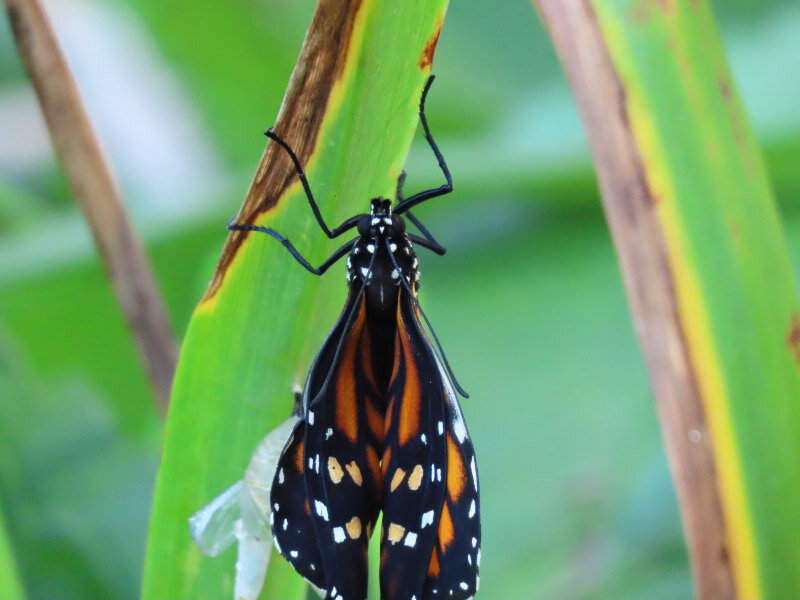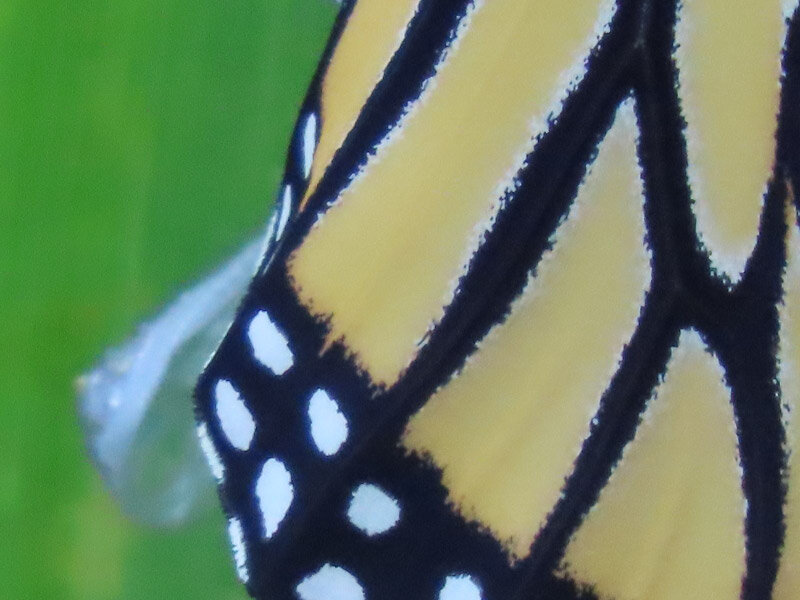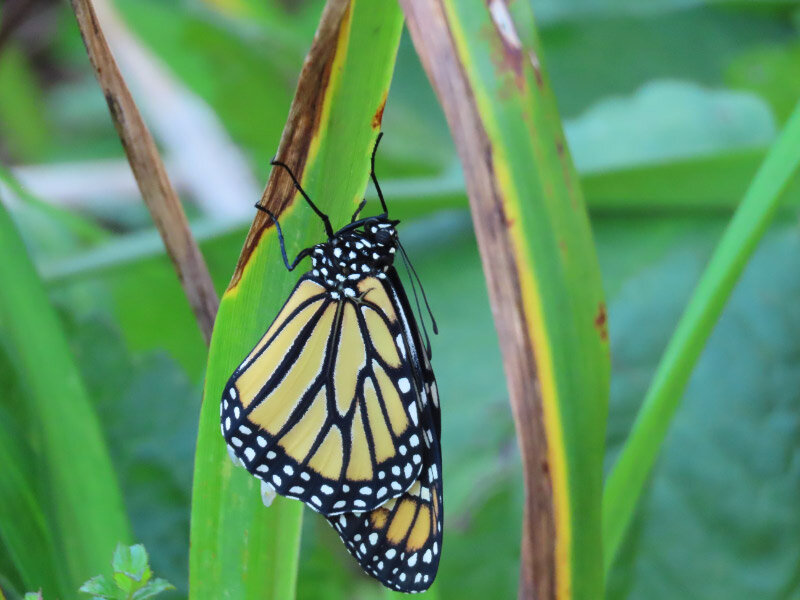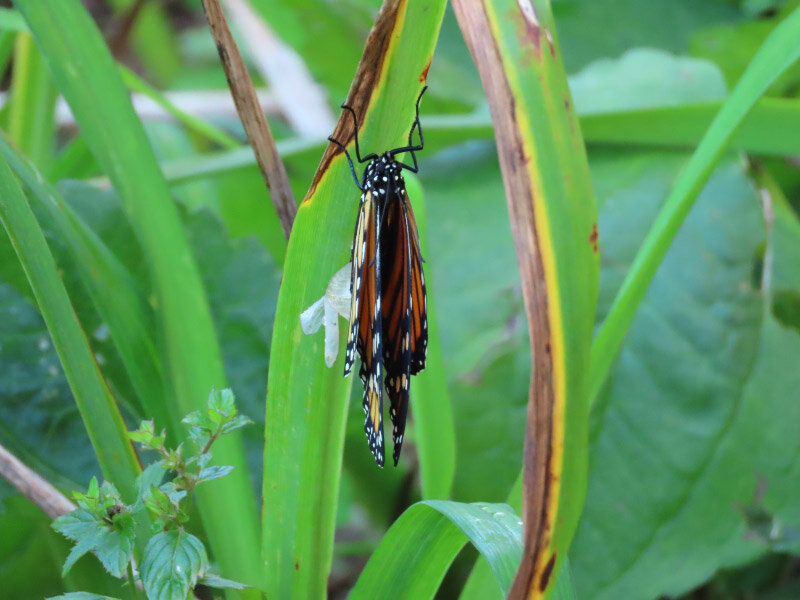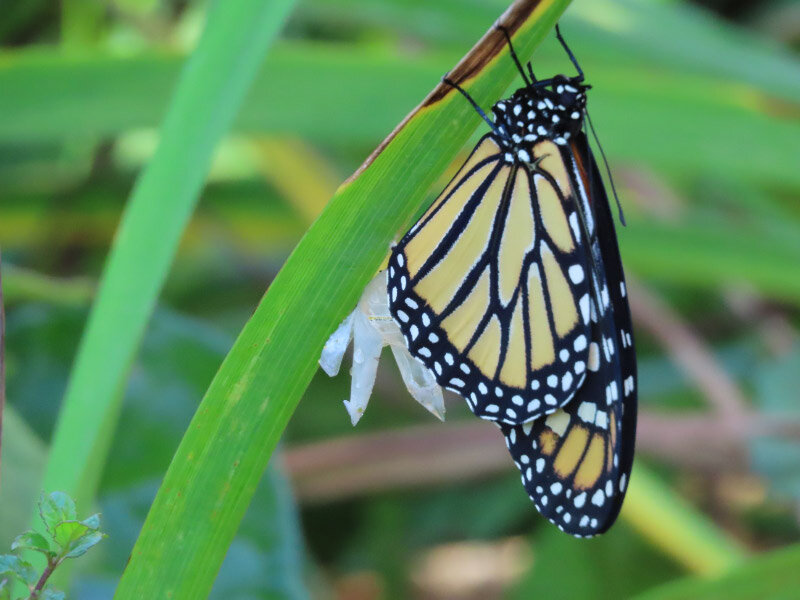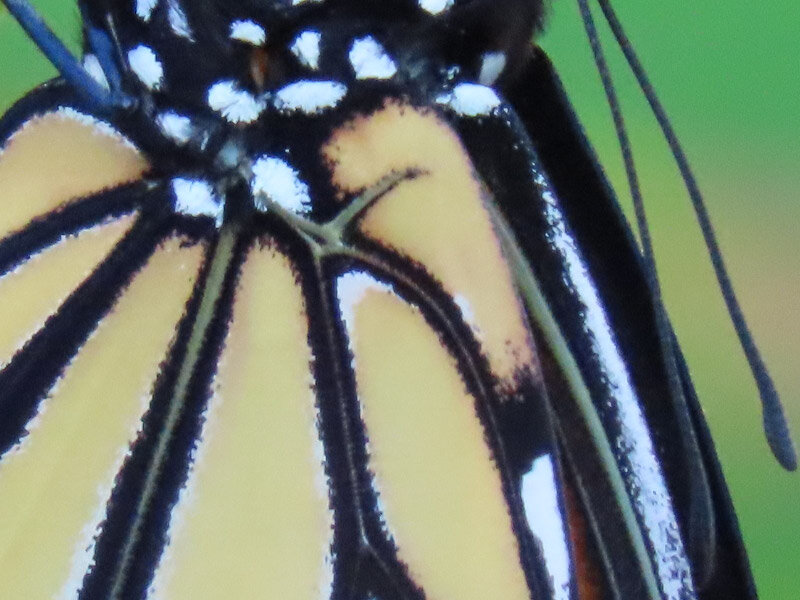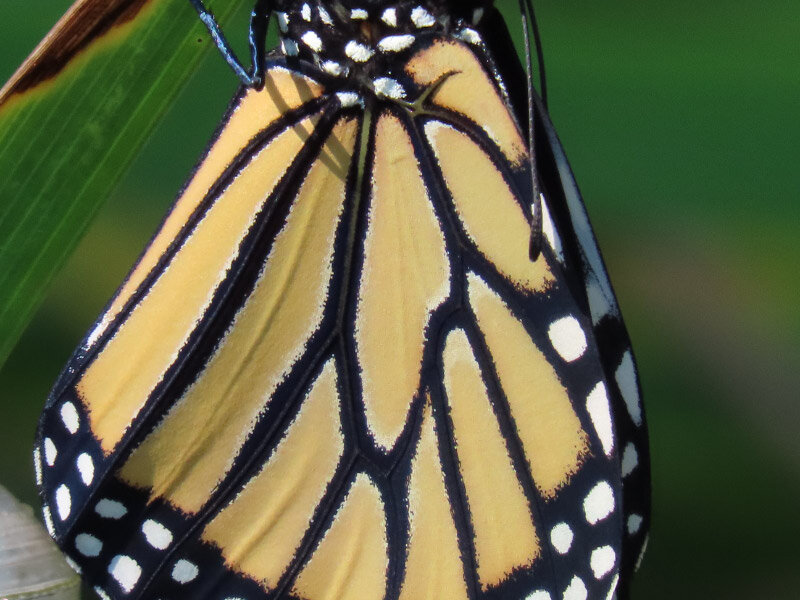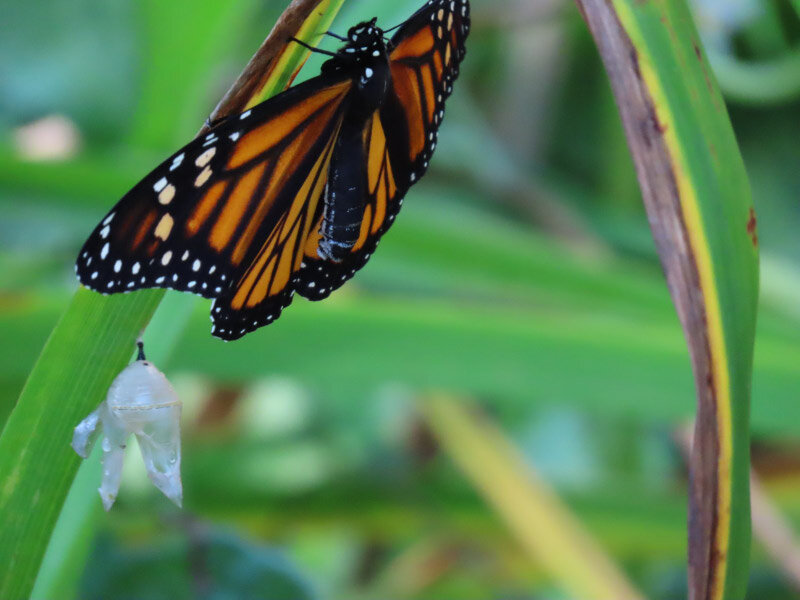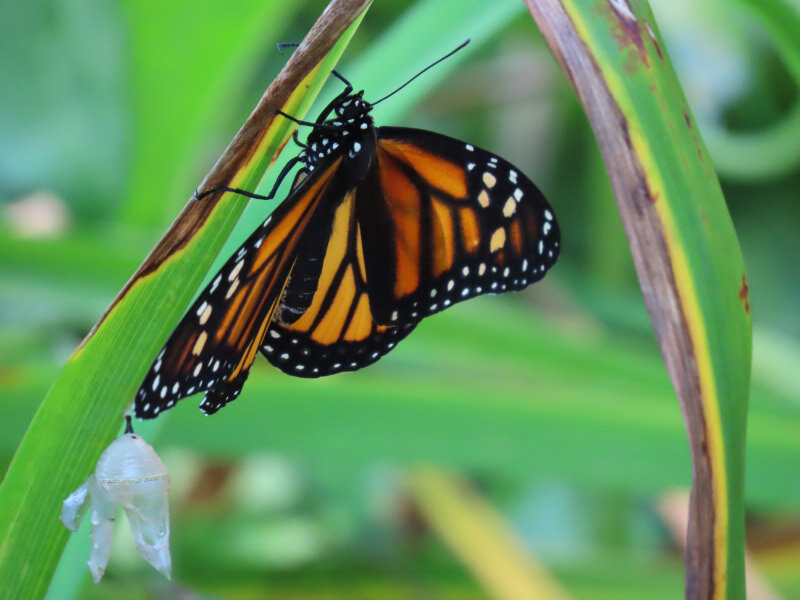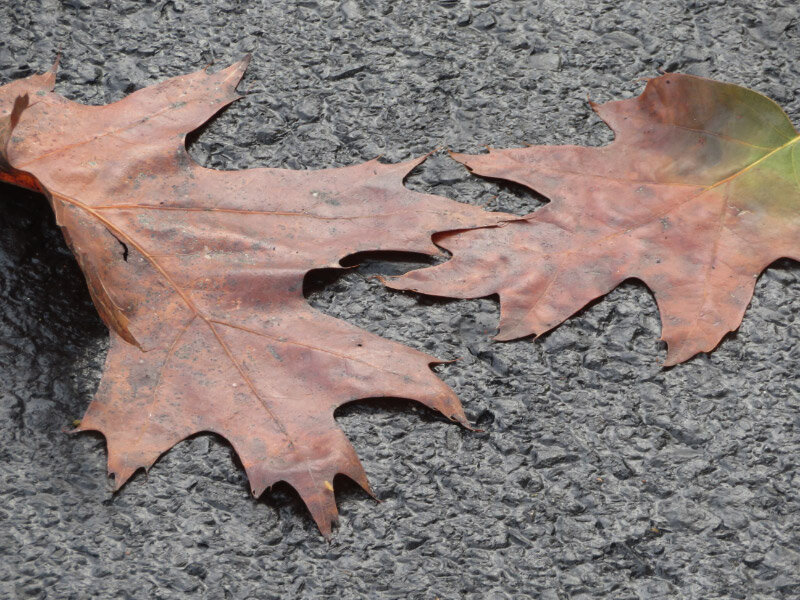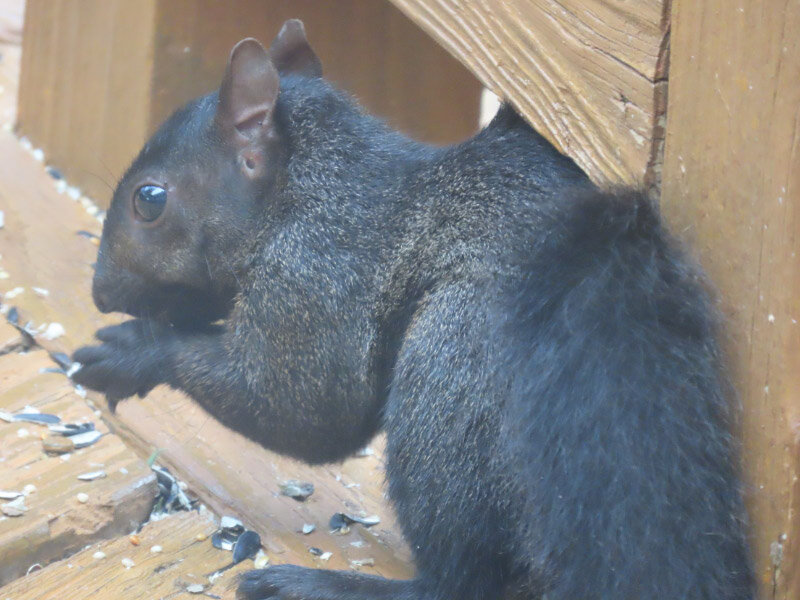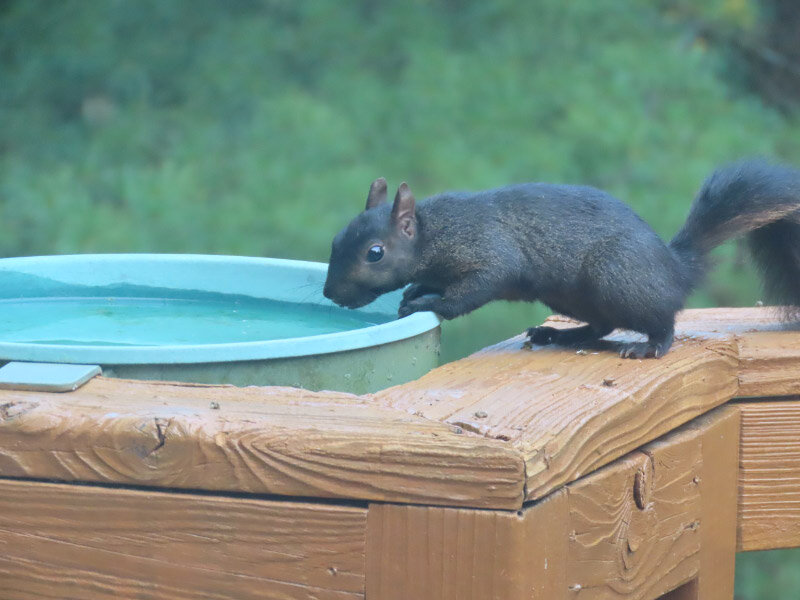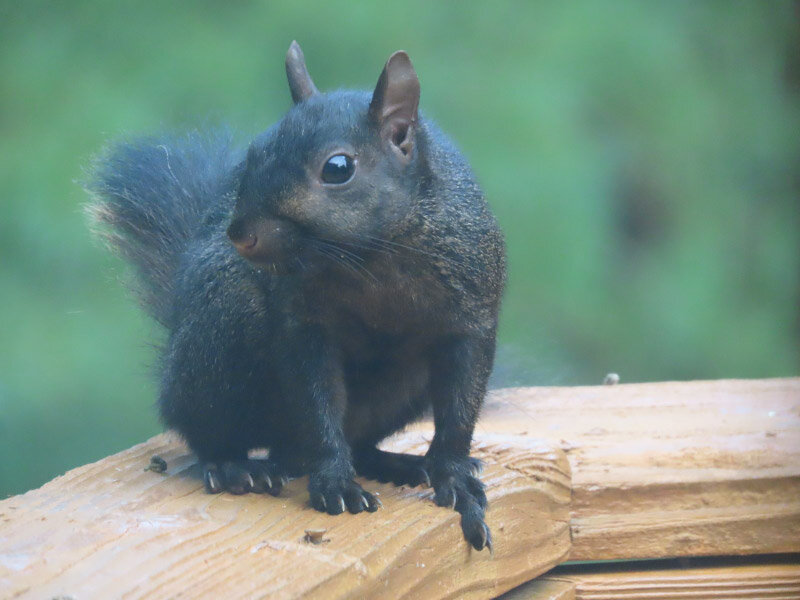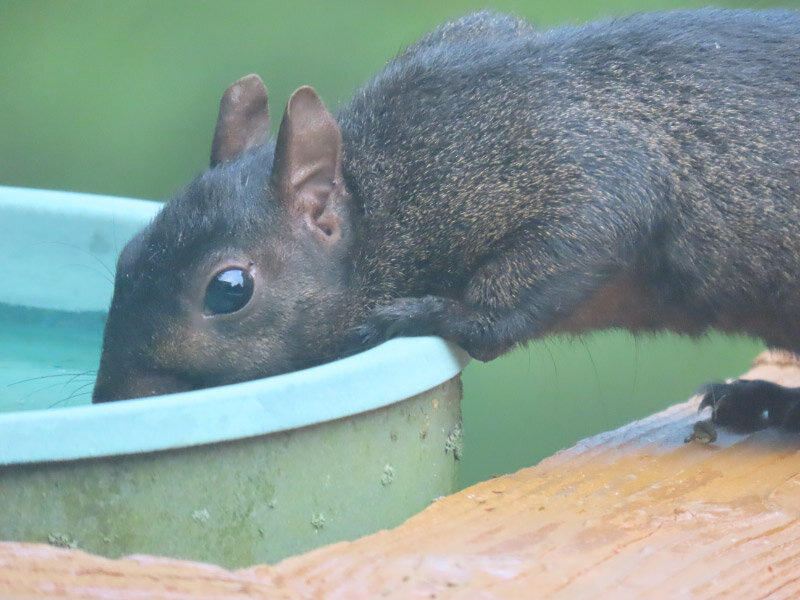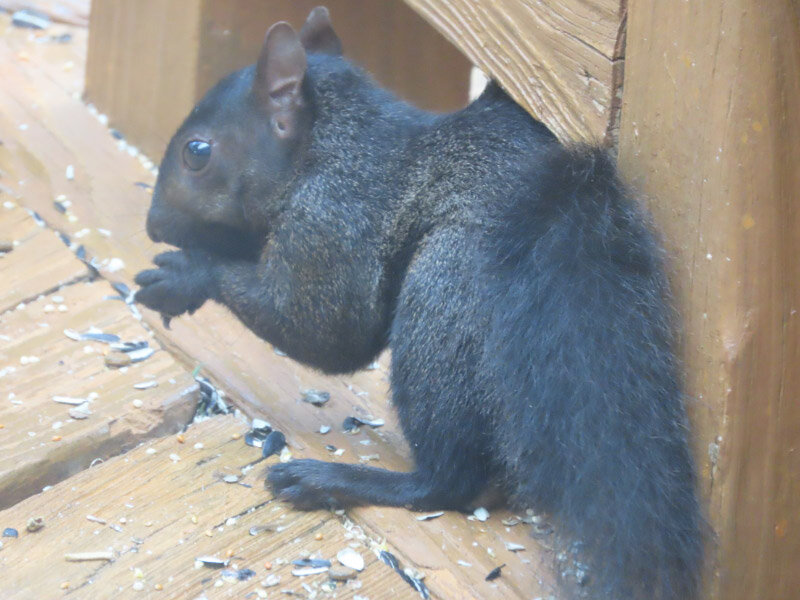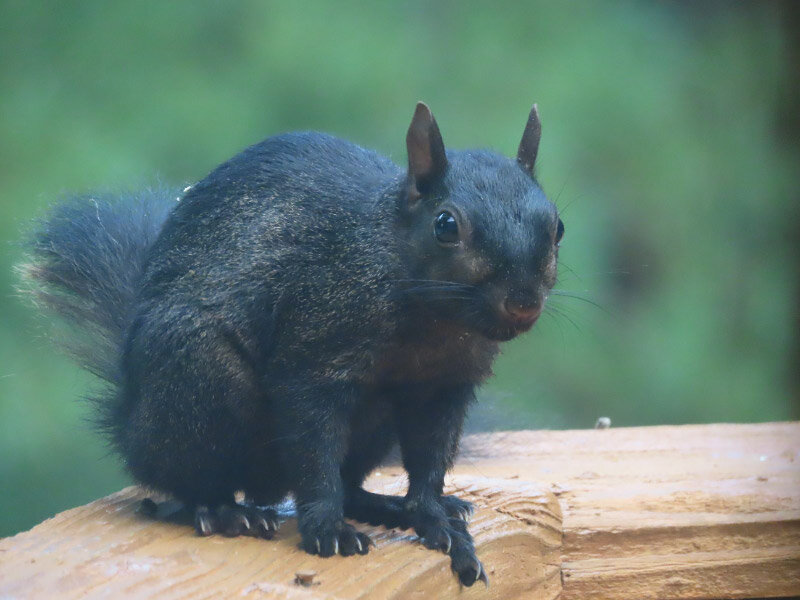Emerging Monarch
/I went out each morning after finding the Monarch butterfly chrysalis on the day lily leaf; on the second morning that the chrysalis had turned from pale green to clear – the indication that the butterfly was almost ready to emerge. Since I hadn’t seen any Monarchs in our yard this year…I decided to attempt capture the emerging butterfly with my camera.
I came back 30 minutes later…thought perhaps the chrysalis wall was weakening…that some parts in the middle were beginning to split. I had changed to my bridge camera (Canon Powershot SX70 HS), mounted it on a monopod, and was sitting on a comfortable stool.
30 minutes later it looked like the top – above the horizontal row of gold dots - was beginning to split.
Another 30 minutes and I was out again – zooming in with the camera and thinking, at first, that nothing much had changed. But then I noticed some action on the other side of the chrysalis.
I changed to video since I knew the emergence would happen very quickly. It is not a great video (I need practice with video as much as I do with macro photography!) but I learned a lot from watching it later. The chrysalis did crack open but not exactly in the way I anticipated. What I was seeing at the top of the chrysalis was the abdomen of the insect which was huge! It must contain the fluid that is needed to expand the wings. The papillae on either side of the proboscis moved a lot at the beginning and I wondered if they were somehow involved in the fluid distribution or simply cleaning up the area around the face. See the video here.
After the video of the main event – I went in to let my husband know it had occurred and came back out to finish the event with some photes. Over the next 30 minutes the butterfly’s wings continued to unfurl and expand. At some point the butterfly ejected the extra fluid in its abdomen.
30 minutes later the butterfly finally opened its wings. Note that the abdomen is smaller than when it first emerged and it is probably a female.
What a great way to start the day!

